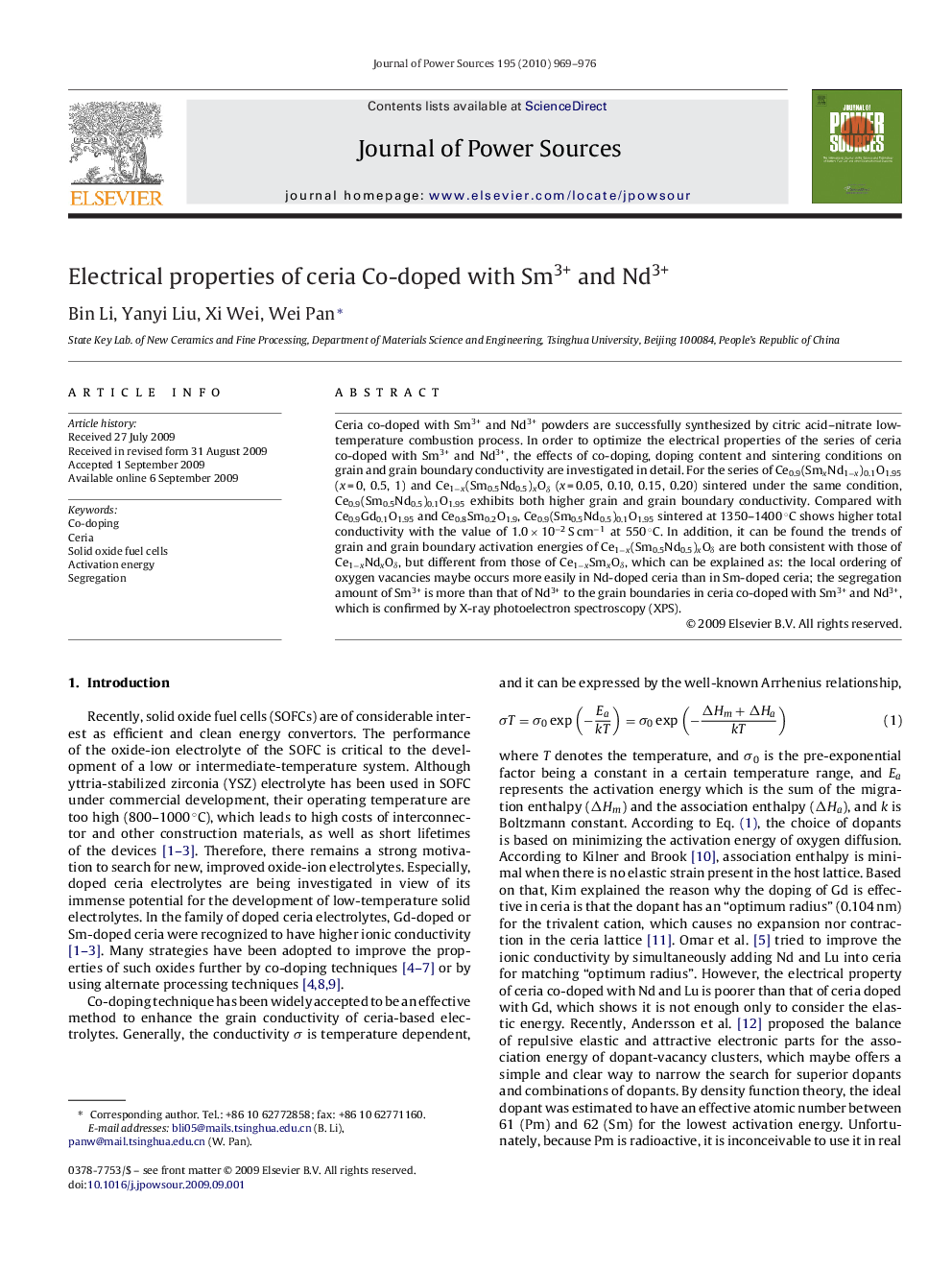| Article ID | Journal | Published Year | Pages | File Type |
|---|---|---|---|---|
| 1285084 | Journal of Power Sources | 2010 | 8 Pages |
Ceria co-doped with Sm3+ and Nd3+ powders are successfully synthesized by citric acid–nitrate low-temperature combustion process. In order to optimize the electrical properties of the series of ceria co-doped with Sm3+ and Nd3+, the effects of co-doping, doping content and sintering conditions on grain and grain boundary conductivity are investigated in detail. For the series of Ce0.9(SmxNd1−x)0.1O1.95 (x = 0, 0.5, 1) and Ce1−x(Sm0.5Nd0.5)xOδ (x = 0.05, 0.10, 0.15, 0.20) sintered under the same condition, Ce0.9(Sm0.5Nd0.5)0.1O1.95 exhibits both higher grain and grain boundary conductivity. Compared with Ce0.9Gd0.1O1.95 and Ce0.8Sm0.2O1.9, Ce0.9(Sm0.5Nd0.5)0.1O1.95 sintered at 1350–1400 °C shows higher total conductivity with the value of 1.0 × 10−2 S cm−1 at 550 °C. In addition, it can be found the trends of grain and grain boundary activation energies of Ce1−x(Sm0.5Nd0.5)xOδ are both consistent with those of Ce1−xNdxOδ, but different from those of Ce1−xSmxOδ, which can be explained as: the local ordering of oxygen vacancies maybe occurs more easily in Nd-doped ceria than in Sm-doped ceria; the segregation amount of Sm3+ is more than that of Nd3+ to the grain boundaries in ceria co-doped with Sm3+ and Nd3+, which is confirmed by X-ray photoelectron spectroscopy (XPS).
